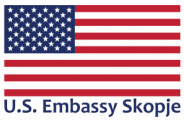In the previous post we mentioned the mental health approach of violent extremism and the psychology behind violent extremism in all it’s forms. Today we will try to elaborate how the media treated the terrorist attacks that took place in Europe and the people behind it.
Was the NZ attack a terrorism attack?
The attacks on the New Zealand mosques raised a lot of questions about whether Islamophobia and the threat of violent right-wing extremism was being taken seriously by politicians, law enforcement and the media. Watching the behaviour of the politicians left the mass wondering if the NZ attack could be even called a terrorist attack, because this time there was a white cold blooded man behind the destruction and loss of lives. Terrorism experts claimed that there seems to be a link between associating terrorism to the Muslim community only and that can be more dangerous and create a group of people to become victims of stereotypization which leads to isolation and dehumanization. For too long, terror attacks have been depicted as a uniquely Muslim problem, with acts of violence described as “terrorist only when it applies to Muslims,” said Abbas Barzegar of the Council on American Islamic Relations. He works on documenting and combating anti-Muslim bigotry and Islamophobia. “We’ve got an issue in this country where anytime a violent act is committed by a Muslim, the media starts at terrorism and then works backward from there,” added Colin Clarke, a senior research fellow at The Soufan Center, a New York-based think tank[1]. Some of the most notorious recent attacks by white assailants with racist or extremist views— the Pittsburgh synagogue shooting that killed 11 people in October and the church shooting that killed nine black worshippers in Charleston in 2015 — were not labeled terrorism and the assailants were not tried as terrorists. Neither was the shooting by a white assailant at a mosque in Quebec, Canada in 2017 that killed six Muslims. Clarke, the terrorism expert, said he’s been called to testify on Capitol Hill three times in the past two years about jihadi terrorism. “Where are the hearings about right-wing violence?” he asked[2].
Skin Color Matters, for the media
Webster’s Dictionary defines terrorism as “the systematic use of violence to create a general climate of fear in a population and to bring about a particular political objective.” It has been practiced by political organizations with both rightist and leftist objectives, by nationalistic and religious groups, by revolutionaries, and even by state institutions such as armies, intelligence services, and police. It has also been used by individuals who for whatever reason, believe they have a grievance with the state or with other individuals or groups. Anyone who commits a violent act or the threat of violence against civilians or the government or any group to achieve their political or personal goals is a terrorist. Terrorism is used to intimidate and put fear in the populous, many of whom are innocent bystanders, but quickly become victims of the horror of these senseless acts of violence[3]. So if that is the definition of what a terrorist attack is, then the question follows why was the NZ terrorist described as a “Angelic” boy who got lost and had mental issues? Australian TV presenter Jane Fran compares the coverage of the Christchurch attack and the Orlando nightclub shooting. “Imagine being a Muslim and waking up to a headline that describes the person who’s just killed 50 of your fellow Muslims as ‘Angelic boy who grew into an evil far-right mass killer,” Fran says in the video, in reference to a headline by the Daily Mirror. She continues by noting that the same paper referred to the Daesh terrorist who killed 50 people at an Orlando nightclub in 2016 as “ISIS maniac kills 50 in a gay club.”[4]
Terrorism has no religion
The NZ terrorist attack was a indicator that terrorism doesn’t have a religion and it doesn’t belong to only one community. Puerto Rican singer Ricky Martin, regarded as the king of Latin pop, blasted international media for not calling the man, who killed at least 49 people in twin mosque attacks in New Zealand, a “terrorist”. On his Instagram story, Martin wrote: “The man, who killed more than 40 Namazi and left 20 seriously injured. All international media is calling him Shooter and Extremist but not a terrorist,why?? “Because he is not a Muslim!!”[5]
No matter which topic of radicalization or violent extremism politicians or the media address, it has to be done with sensitivity without oversimplifying and stigmatizing people with a mental health disorder, or by color.
Meral Musli Tajroska – a psychologist, an expert on violent extremism and radicalism and a woman rights activist
[1] https://www.apnews.com/d8c7300b96ca4b809870f0e9b85e80b7
[2] https://www.apnews.com/d8c7300b96ca4b809870f0e9b85e80b7
[3] https://www.shreveporttimes.com/story/news/local/blogs/2019/03/23/terrorism-terrorism-regardless-skin-color-perpetrator/3246118002/
[4] https://www.dailysabah.com/asia/2019/03/20/double-standards-of-western-media-outlets-criticized-after-christchurch-terror-attack
[5] https://www.aa.com.tr/en/culture/ricky-martin-blasts-double-standards-of-intl-media/1420011


